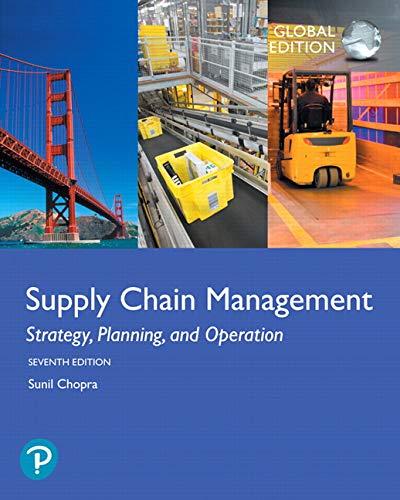SuperPart, an auto parts distributor, has a large warehouse in the Chicago region and is deciding on
Question:
SuperPart, an auto parts distributor, has a large warehouse in the Chicago region and is deciding on a policy for the use of TL or LTL transportation for inbound shipping. LTL shipping costs $1 per unit.
TL shipping costs $850 per truck plus $150 per pickup. Thus, a truck used to pick up from three suppliers costs 850 + (3 × 100) = $1,150. A truck can carry up to 2,000 units. SuperPart incurs a fixed cost of $150 for each order placed with a supplier. Thus, an order with three distinct suppliers incurs an ordering cost of $450. Each unit costs $50, and SuperPart uses a holding cost of 23 percent. Assume that product from each supplier has an annual demand of 3,000 units. SuperPart has thousands of suppliers and the company must decide on the number of suppliers to group per truck if using TL.
a. What is the optimal order size and annual cost if LTL shipping is used? What is the time between orders?
b. What is the optimal order size and annual cost if TL shipping is used with a separate truck for each supplier? What is the time between orders?
c. What is the optimal order size and annual cost per product if TL shipping is used but two suppliers are grouped together per truck?
d. What is the optimal number of suppliers that should be grouped together? What is the optimal order size and annual cost per product in this case? What is the time between orders?
e. Which shipping policy would you recommend if each product has an annual demand of 3,000? Which shipping policy would you recommend for products with an annual demand of 1,500? Which shipping policy would you recommend for products with an annual demand of 18,000?
Step by Step Answer:

Supply Chain Management Strategy Planning And Operation
ISBN: 9781292257891
7th Global Edition
Authors: Sunil Chopra





